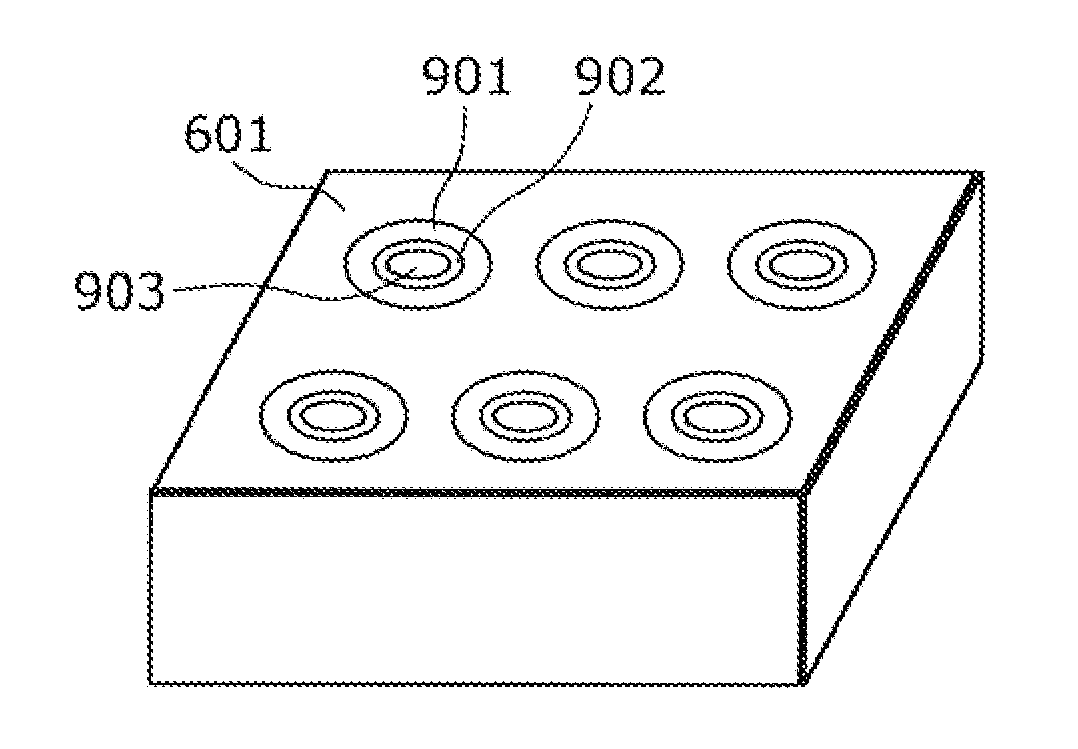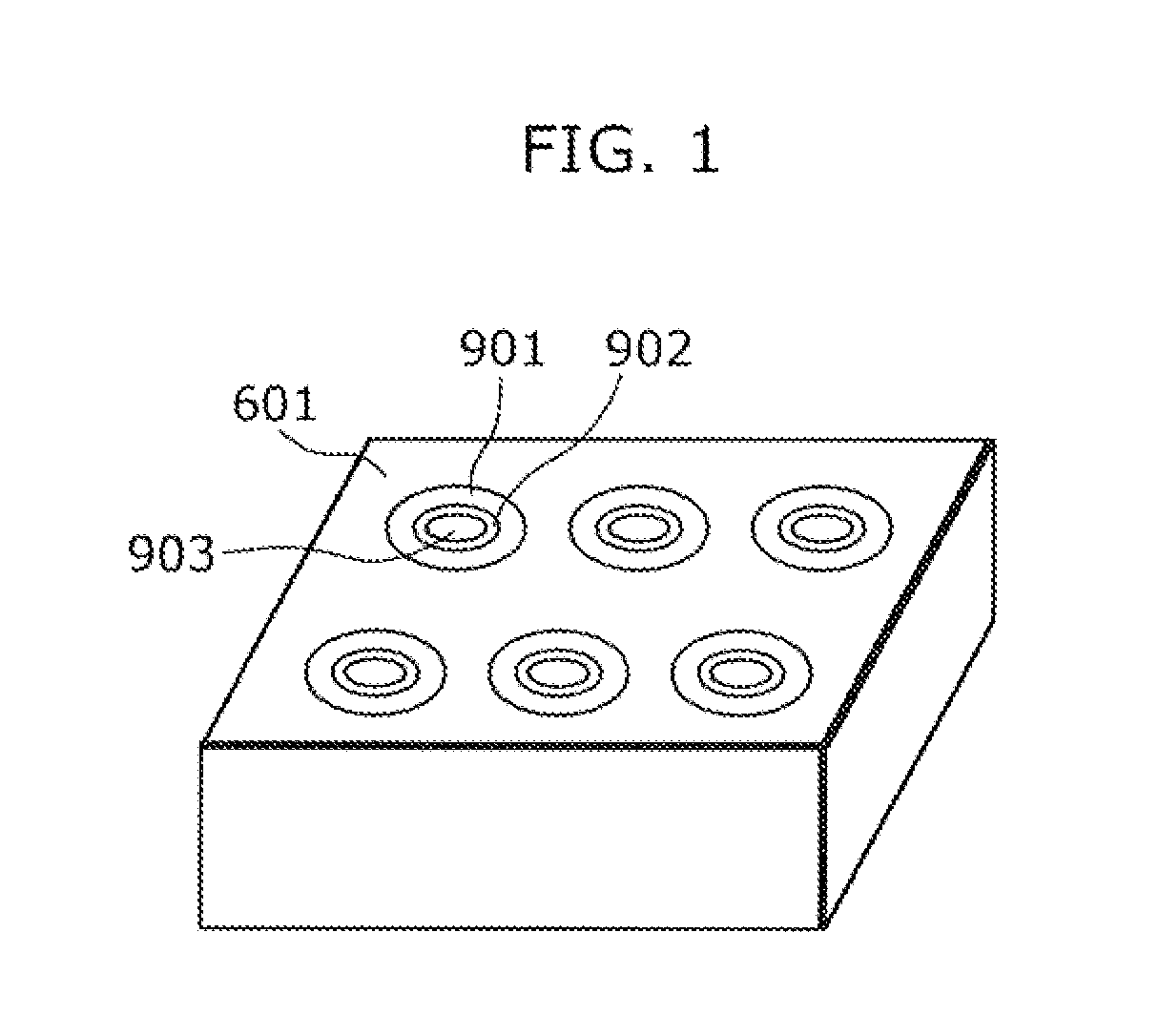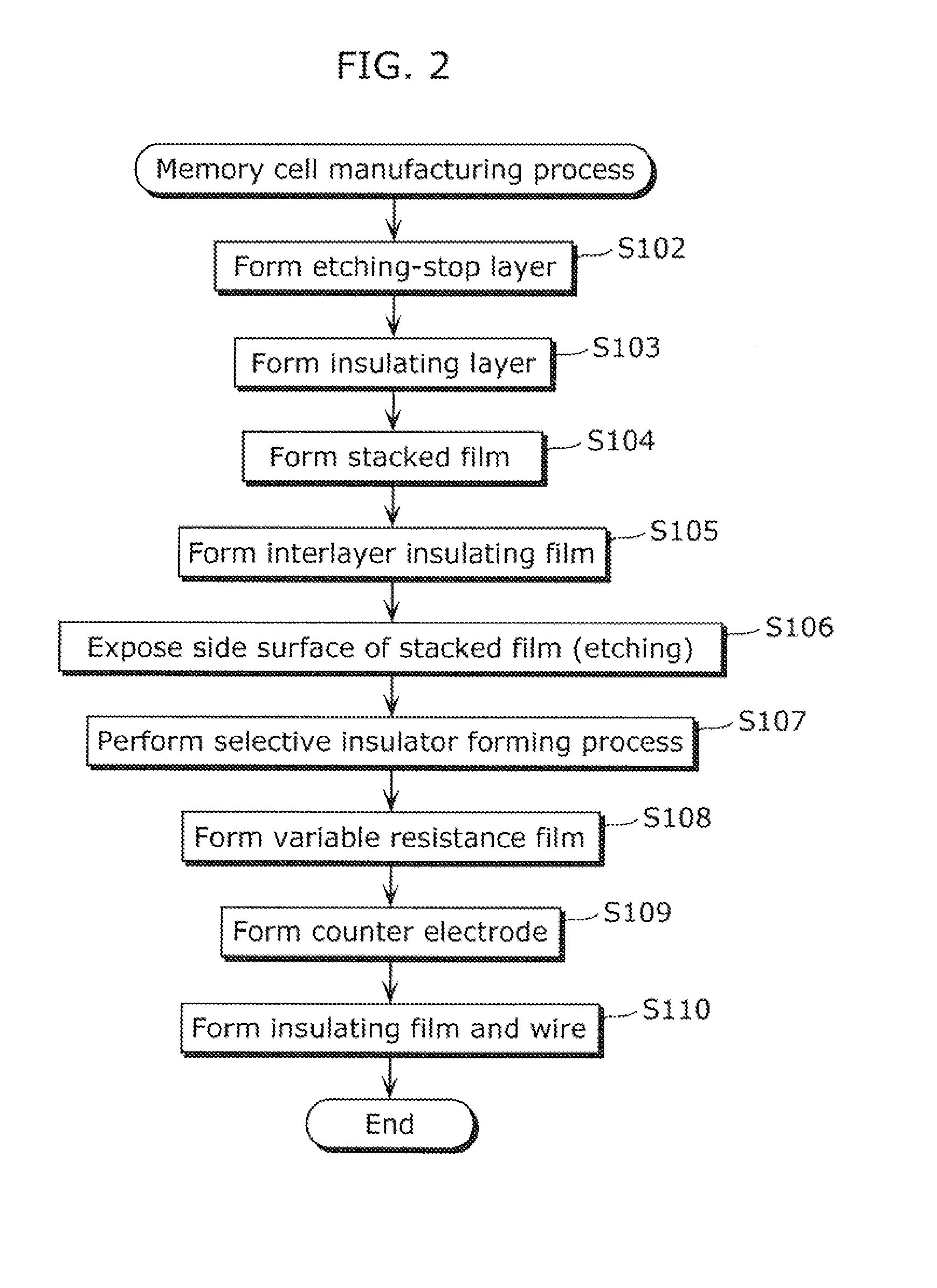Method of manufacturing semiconductor memory
a semiconductor memory and manufacturing method technology, applied in the manufacture/treatment of semiconductor devices, electrical apparatus, electrical devices, etc., can solve the problems of difficult to achieve satisfactorily-reproducible fittings, difficult to perform partial insulation coatings or projection forming, and difficult to keep positional relationships consistent, so as to reduce the curvature radius and reduce the projection curvature. , the effect of small curvature radius
- Summary
- Abstract
- Description
- Claims
- Application Information
AI Technical Summary
Benefits of technology
Problems solved by technology
Method used
Image
Examples
embodiment 1
In Embodiment 1, a method of manufacturing a ReRAM in which a variable resistance film is provided in a side surface of an electrode shall be described using FIGS. 1 to 9. It should be noted that these diagrams are intended for showing the positional relationship of respective components and thus thickness and length proportions are not uniform. Furthermore, although plural memory cells are normally formed within the substrate surface, FIGS. 3 to 9 show a cross-sectional view of a vicinity of one cell among these memory cells.
FIG. 1 is an outline configuration diagram of a memory cell of a ReRAM. A semiconductor memory such as the ReRAM requires circuits for driving respective memory cells. These can make use of semiconductor integrated circuits manufactured using the usual CMOS process and so on. Although a memory cell and a drive circuit can be connected by wiring after being manufactured in separate substrates, integrating the memory cell and the drive circuit on the same substra...
embodiment 2
In Embodiment 2, the case of implementing the present invention in the forming of an MRAM shall be described using FIGS. 10 to 14. FIG. 10 is a flowchart for describing a manufacturing process of the memory cell of the MRAM, and FIGS. 11 to 14 are diagrams showing the manufacturing process of the memory cell. These diagrams are intended for showing the positional relationship of respective layers and thus thickness and length proportions are not uniform. Furthermore, although these diagrams show a cross-sectional view of the vicinity of one cell, in actuality, plural cells may be formed within the same substrate.
In the case of the MRAM, the cause for the occurrence of resistance change is not the change in the characteristics of the resistance, and so on, in the insulating film-side as in the ReRAM, but the change in the characteristics of the ferromagnet making up the electrodes formed on both upper and lower surfaces of a tunnel insulating film which is a semiconductor layer. For ...
embodiment 3
In Embodiment 3, the case of an ReRAM having a cell format in which an electrode and a variable resistance film are stacked in a perpendicular direction with respect to the substrate, and plural memories are formed in a planar manner shall be described using FIGS. 15 to 20. FIG. 15 is a flowchart for describing a manufacturing process of a memory cell of the ReRAM, and FIGS. 16 to 20 are diagrams showing the manufacturing process of the memory cell. These diagrams are also intended for showing the positional relationship of respective layers and thus thickness and length proportions are not uniform. Furthermore, although these diagrams show a cross-sectional view of the vicinity of one cell, in actuality, plural cells may be formed within the same substrate.
This cell format also requires drive circuits (semiconductor integrated circuits) for cell driving, and it is preferable that these drive circuits be manufactured on the semiconductor substrate before hand using a CMOS process, a...
PUM
 Login to View More
Login to View More Abstract
Description
Claims
Application Information
 Login to View More
Login to View More - R&D
- Intellectual Property
- Life Sciences
- Materials
- Tech Scout
- Unparalleled Data Quality
- Higher Quality Content
- 60% Fewer Hallucinations
Browse by: Latest US Patents, China's latest patents, Technical Efficacy Thesaurus, Application Domain, Technology Topic, Popular Technical Reports.
© 2025 PatSnap. All rights reserved.Legal|Privacy policy|Modern Slavery Act Transparency Statement|Sitemap|About US| Contact US: help@patsnap.com



